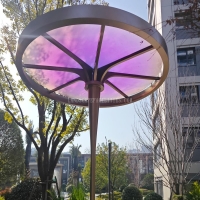Welcome to the website for landscape facilities products and knowledge.
How does the table’s design account for the prevention of damage from exposure to oils or greases?
Modern table designs incorporate multiple strategic elements to combat damage from oils and greases. The foundation begins with material selection - stainless steel, high-pressure laminates, and industrial-grade polymers naturally resist petroleum-based substances. These materials are non-porous, preventing absorption that leads to deterioration.
Manufacturers enhance this natural resistance through specialized surface treatments. Powder coatings create impermeable barriers that oils cannot penetrate, while chemical-resistant sealants protect substrate materials. The application process involves multiple layers cured at high temperatures, creating surfaces that repel rather than absorb greasy substances.
Design considerations extend beyond surface-level protection. Seamless construction eliminates joints where oils could accumulate, while rounded corners facilitate easier cleaning. Elevated edges contain spills, and integrated drainage systems prevent standing liquids from damaging the table structure.
Maintenance features are equally crucial. Tables designed for grease-prone environments incorporate heat-resistant properties to withstand high-temperature cleaning methods. The surfaces maintain their integrity when exposed to industrial degreasers, ensuring long-term protection without compromising the table's structural stability or appearance.
Through this comprehensive approach combining resistant materials, protective coatings, and intelligent design, modern tables achieve exceptional durability in oil and grease-rich environments from industrial workshops to commercial kitchens.
Related search:

Recommendation
Metal frame with gradient color acrylic combined with high-end shading landscape facilities